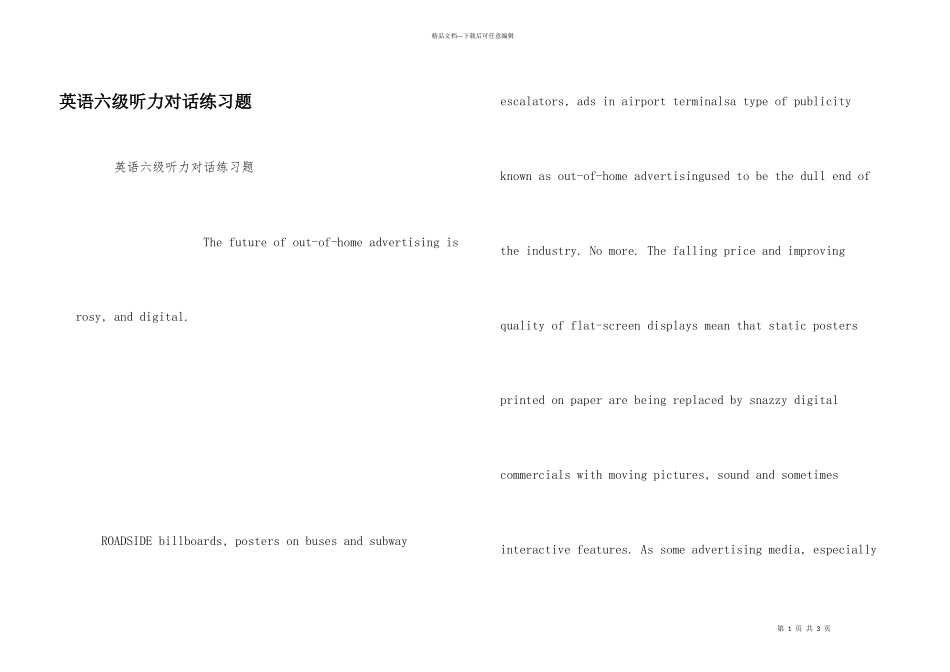第 1 页 共 3 页精品文档---下载后可任意编辑英语六级听力对话练习题 英语六级听力对话练习题 The future of out-of-home advertising is rosy, and digital. ROADSIDE billboards, posters on buses and subway escalators, ads in airport terminalsa type of publicity known as out-of-home advertisingused to be the dull end of the industry. No more. The falling price and improving quality of flat-screen displays mean that static posters printed on paper are being replaced by snazzy digital commercials with moving pictures, sound and sometimes interactive features. As some advertising media, especially 第 2 页 共 3 页精品文档---下载后可任意编辑newspapers, see their audiences fade, streets, airports and other public spaces are becoming crowded with more potential viewers than ever, as people continue moving to cities and travel more. MagnaGlobal, a media researcher, predicts that worldwide spending on out-of-home advertising will expand by 8.3% in 2024 to about $26.4 billion, faster growth than that seen for other non-internet forms of advertising. Spending on digital billboards and posters is expected to double in the next five years, to $5.2 billion. William Eccleshare, who runs the international operations of Clear Channel, an American firm which is one of the largest out-of-home ad companies, thinks that in some countries more than 90% of its business will be digital by the decades end. 第 3 页 共 3 页精品文档---下载后可任意编辑 His arch-rival, Jean-Charles Decaux, the boss of Frances JCDecaux, agrees that there will be a significant switch to digital, but mainly inside airports, railway stations, shopping malls and other controlled environments. Ads in bus shelters and other outdoor spots at risk of vandalism will take a lot longer to move away from paper, Mr Decaux thinks. Digital displays already account for about one-quarter of his companys sales in transport hubs, but for less than 5% in street furniture and billboards.


